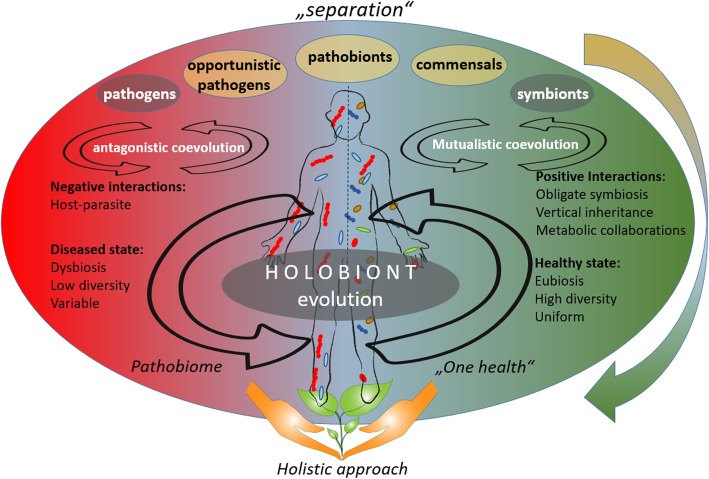Fig. 6.
A shift in the understanding of the microbial-host coevolution from the “separation” theories to the holistic approach. The hosts and their associated microbiota are assumed to have coevolved with each other, whereby different approaches are considered to describe the coevolution theory. According to the “separation” approach (upper part of the figure), the microorganisms can be divided into pathogens, neutral, and symbionts, depending on their interaction with their host. The coevolution between host and its associated microbiota may be accordingly described as antagonistic (based on negative interactions) or mutualistic (based on positive interactions). The recent emerge in publications about opportunistic pathogens and pathobionts gave a shift towards holistic approach in the coevolutions theory (lower part of the figure). The holistic approach sees the host and its associated microbiota as one unit (so-called holobiont), that coevolves as one entity. According to the holistic approach, holobiont’s disease state is linked to dysbiosis, low diversity of the associated microbiota, and their variability: a so-called “pathobiome” state. The healthy state, on the other hand, is accompanied with eubiosis, high diversity, and uniformity of the respective microbiota. The dynamic flow of microorganisms from one host to another and to the environment, described by the One Health concept, underpins the holistic approach in the coevolution

